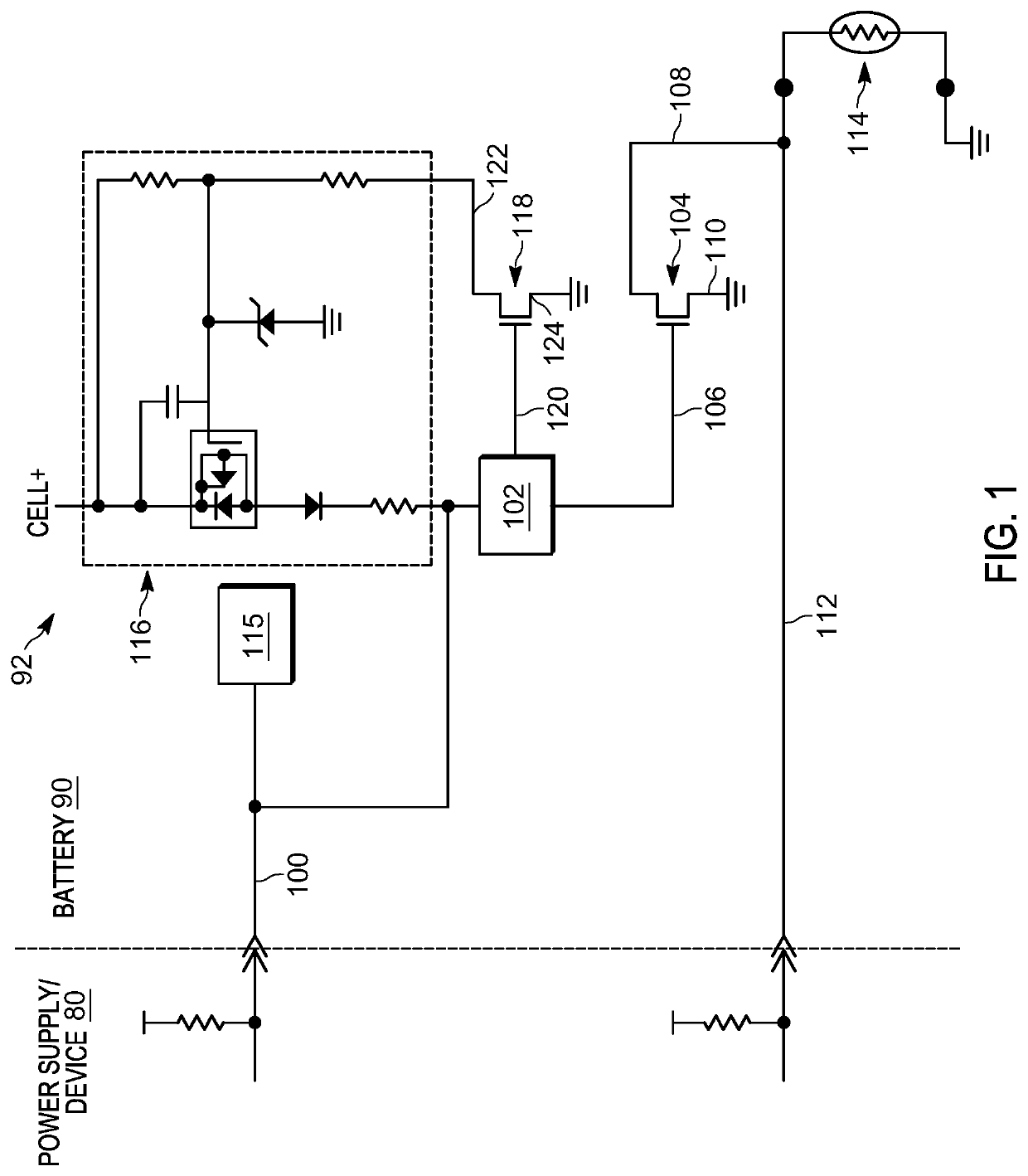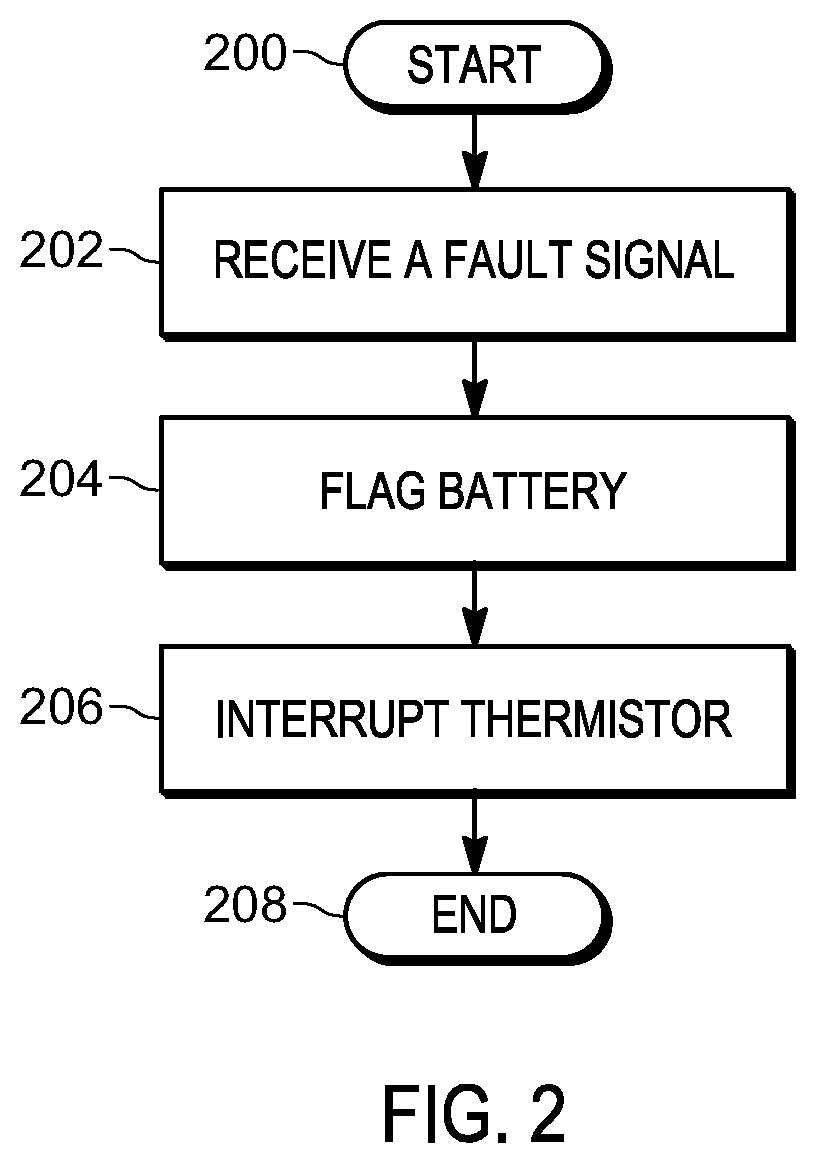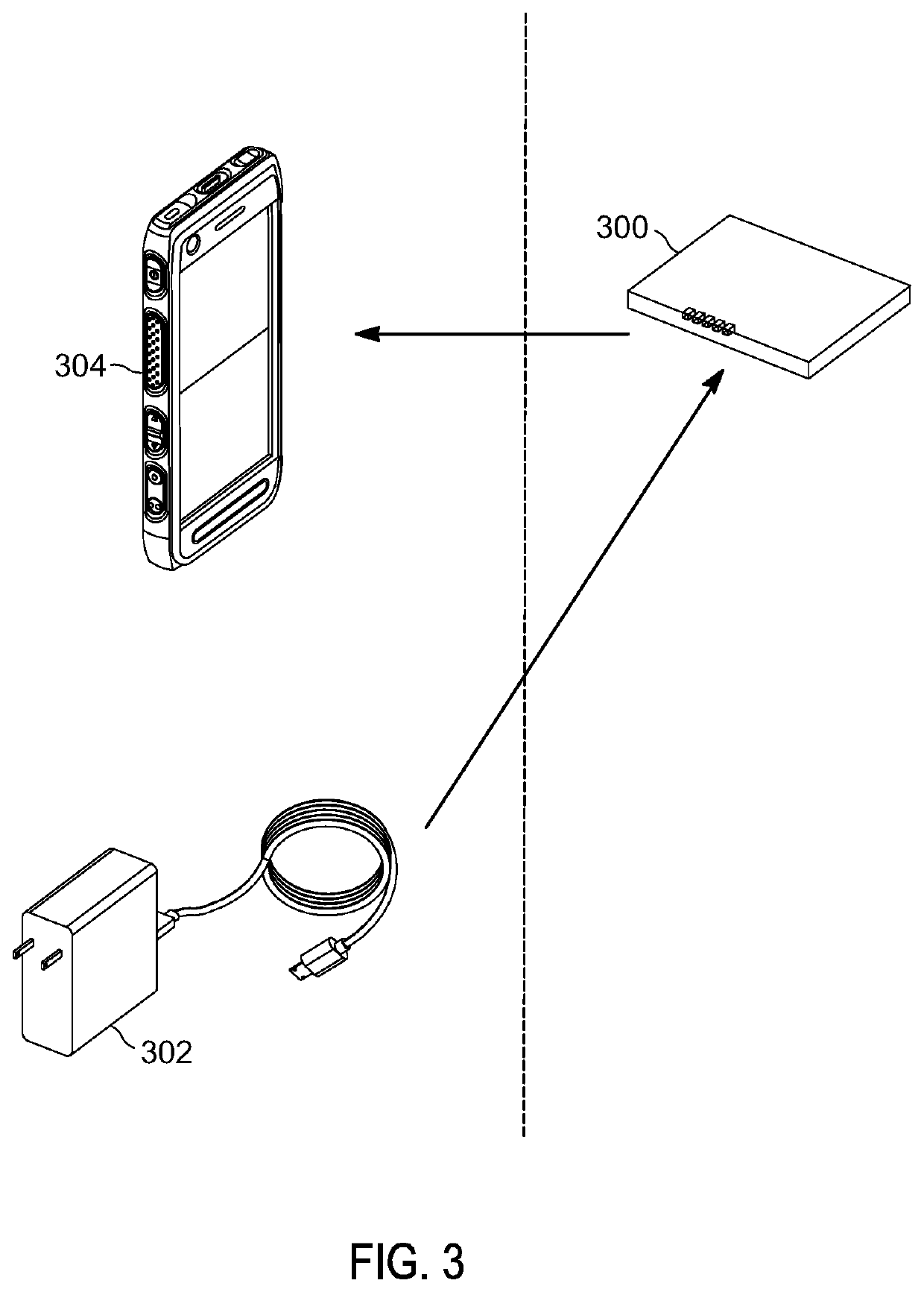Batteries and methods for handling a detected fault condition
a technology of fault condition and battery, applied in the direction of batteries, safety/protection circuits, sustainable manufacturing/processing, etc., can solve the problems of fault condition occurring, first cell of the communications device battery being compromised, etc., to prevent or reduce the undesirable safety and reliability problems
- Summary
- Abstract
- Description
- Claims
- Application Information
AI Technical Summary
Benefits of technology
Problems solved by technology
Method used
Image
Examples
Embodiment Construction
[0021]Batteries disclosed herein can be used to power devices and can be charged by power supplies. Unless indicated otherwise, a “device” can be any item that a battery can power, a “power supply” is anything that can charge a battery, and a “battery” is an object that can retain an electric charge and can include one or more cells and circuitry. A battery may be contained in a user-removable battery for a communications device. A “communications device” may include a cellular telephone, radio, walkie-talkie, or other device used to send and / or receive electronic communications. First responders may desire user-removable batteries so that a battery can be replaced when it is depleted.
[0022]When a battery is plugged into a power supply for charging, preventing each of the cells of the battery from charging beyond a desired rate can increase safety and reliability of the battery. For example, the desired rate may be 1 C, the rate it takes to charge the battery in 1 hour. Sometimes th...
PUM
| Property | Measurement | Unit |
|---|---|---|
| conductive | aaaaa | aaaaa |
| temperature | aaaaa | aaaaa |
| electric current | aaaaa | aaaaa |
Abstract
Description
Claims
Application Information
 Login to View More
Login to View More - R&D
- Intellectual Property
- Life Sciences
- Materials
- Tech Scout
- Unparalleled Data Quality
- Higher Quality Content
- 60% Fewer Hallucinations
Browse by: Latest US Patents, China's latest patents, Technical Efficacy Thesaurus, Application Domain, Technology Topic, Popular Technical Reports.
© 2025 PatSnap. All rights reserved.Legal|Privacy policy|Modern Slavery Act Transparency Statement|Sitemap|About US| Contact US: help@patsnap.com



